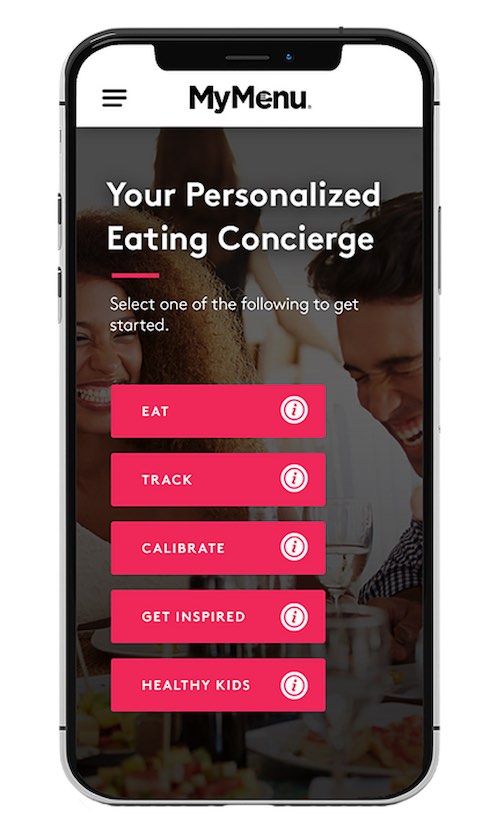
Diabetes in children is becoming increasingly prevalent, with both type 1 and type 2 cases rising due to factors such as reduced physical activity, excess weight, and emerging autoimmune trends.
By recognizing early signs and intervening promptly, parents can play a crucial role in ensuring the best possible health outcomes for their children.
Diabetes in kids
As a Dietitian and Certified Diabetes Educator (CDE) with a couple of decades of nutrition counseling experience, I find the recent rise in type 2 and type 1 diabetes among children deeply concerning. Especially since it was virtually nonexistent in my early years of practice.
Prevalent causes
Decreased physical activity and excess weight have contributed to a concerning rise in prediabetes and type 2 diabetes among children. Additionally, there is an emerging trend of children being diagnosed with both type 1 and type 2 diabetes simultaneously (1). Autoimmune diseases are also on the rise, which may explain the increase in type 1 diabetes diagnoses as well (2).
Involving your pediatrician
In my experience, many parents assume that if they are healthy, their children must be as well. However, a child’s health isn’t always directly tied to their parents. Recognizing when a child might be overweight can be challenging, especially when comparing them to their peers. I recommend discussing your child’s health risks with your pediatrician privately—without the child in the room—to address any concerns and secure a referral to a pediatric dietitian for a comprehensive assessment and personalized guidance.
With that in mind, let’s talk about some signs of diabetes in kids so you can recognize these important markers of your child’s health!
Type 1 Diabetes in Kids
Type 1 diabetes is a condition where the pancreas stops making enough insulin, a hormone that helps the body use sugar for energy. It’s an autoimmune disease, which means the body’s immune system attacks itself by mistake. Managing type 1 diabetes involves a multifaceted approach that includes:
- using insulin therapy
- making healthy food choices as an individual and as a family
- monitoring blood glucose levels, getting adequate sleep
- seeking expert support
- engaging in regular exercise
A diagnosis of type 1 diabetes changes how a child eats and lives. Because it’s a lifelong condition, care needs to grow and change as the child grows. This includes adjusting insulin doses, learning how food (especially carbohydrates) affects blood sugar, managing high and low blood sugar levels, and staying active. The goal of treatment is to help kids with type 1 diabetes live happy, healthy lives while growing and thriving. (3,4,5)
Signs of Type 1 Diabetes in Kids
The common signs of type 1 diabetes in kids usually show up together since having high blood sugar affects the whole body.
- High Blood Sugar: This sign of type 1 diabetes needs to be diagnosed by a health professional. However, it is the cause of the other signs listed below of type 1 diabetes. (3)
- Polyuria: Excessive urination or passing significantly more urine than usual. (3)
- Being Very Thirsty (Polydipsia): Excessive thirst or feeling thirsty all the time. (3)
- Weight Loss with Increased Appetite: If your child is constantly eating but still losing weight, this can be a sign of type 1 diabetes. (3)
- Fruity breath odor, deep rapid breath, blurry vision, nausea, and vomiting: If blood sugars are very high, these signs may occur. (3)
How Does a Kid with Diabetes Act with Type 1?
Managing pediatric diabetes is a team effort, and having the right professionals on your side can make all the difference. I recommend working with a pediatric endocrinologist, a pediatric dietitian, a certified diabetes educator, and a psychologist. Many children’s hospitals provide this team-based approach to care.
It’s important to stay connected with your care team. Regular follow-ups are key—not just a one-time visit or a check-in years later. The signs of diabetes in kids can change based on their age and growth, so it’s important to work with a healthcare team to keep up. Aim for a few visits initially to establish a strong plan, then maintain an annual check-up with a dietitian and certified diabetes educator to keep things on track.
Your care team can assist with everything from creating a school nurse plan to screening for related conditions like celiac disease, thyroid disease, or anemia, which are more common in children with diabetes. This support ensures your child gets the comprehensive care they need to thrive. Regular care can also help assess any medical changes and promptly address them.
Risk Factors for Type 1 Diabetes
The reasons why people develop type 1 diabetes are not well understood. Because it is an autoimmune disease, the body usually attacks its own pancreas, but the reasons why it does so are still unclear. Some proven risk factors include:
- Family History (6)
- Genetic factors (6)
- Environmental triggers like infections and viruses. (6)
- Being a child, adolescent or young adult (7)
Autoimmune diseases like type 1 diabetes are becoming more common, but scientists are still working to understand why. (2)
Research suggests that a mix of genetics, environment, and diet may play a big role. One way to help protect your family is by eating a healthy diet with fewer ultra-processed foods. (8) Choosing whole, nutrient-rich foods can support your family’s overall health and may reduce the risk of autoimmune conditions.
Making healthy choices easier for busy families is why I started the Non-UPF Program. You can learn more about ultra-processed foods and their health risks through the program.
Prediabetes In Kids
Before people develop type 2 diabetes, they almost always have “pre-diabetes.” Prediabetes in kids is when blood glucose levels are higher than normal but not yet high enough to be diagnosed as diabetes.
Research has shown that if you take action to control your blood glucose when you have prediabetes, you can delay or prevent type 2 diabetes from occurring. If prediabetes or diabetes runs in your family, schedule an appointment with a dietitian who can help you plan healthy, balanced choices for your family or research if your local hospital or clinic offers nutrition classes. In the United States, about 1 in 5 adolescents and 1 in 4 young adults have prediabetes. (9)
Risk Factors for Prediabetes in Kids
There are many risk factors for prediabetes. Some, such as activity level, screen time, and diet, can be modified at the individual level. Others, like genetics and neighborhood factors, are more difficult to change. However, you are not your genes—and lifestyle choices can make a BIG difference!
Additionally, systemic challenges, such as the affordability of diets high in refined flours, sugar, and saturated fats compared to the higher cost of healthy foods, make it harder for many individuals to make healthier choices. Here is a list of common risk factors:
- Less physical activity
- Frequent consumption of high-sugar, high-fat foods
- Meals consumed away from home, including fast food
- Genetics
- Limited access to parks and recreation sites
- Unsafe neighborhoods limiting outdoor play
- Increased portion sizes
- Parenting practices and behavior
- Driving short distances instead of walking or bicycling
- Overuse of TV, computers, and video games
- Advertisement of high sugar, high-fat foods to children
- The high cost of fruits and vegetables vs. the low cost of junk foods
- Unhealthy school environments
- Limited access to fruits and vegetables
How Quickly Can Prediabetes Change to Type 2?
In adults, the progression from prediabetes to type 2 diabetes typically takes 3-5 years, and damage to the body occurs during this period. Factors such as higher weight and elevated HgbA1c levels increase the risk of progression. Alarmingly, the transition from prediabetes in kids to type 2 diabetes in kids can happen just as quickly. (10).
With decreasing physical activity and rising rates of excess weight, prediabetes and type 2 diabetes are becoming more common in children. Take action today to manage high blood sugar for yourself and your family! See a registered dietitian and certified diabetes educator to learn how to eat and live healthier as a family.
Type 2 Diabetes in Kids
Type 2 diabetes is different from type 1 diabetes because it is insulin resistance that develops slowly over time. The body still makes insulin, but the cells can’t respond to it the same way they once did. This leads to high blood sugar.
Type 2 diabetes used to be a disease seen mostly in adults, but more and more children and adolescents have been diagnosed with it recently. According to the most recent data from the SEARCH study published in 2023, type 2 diabetes among children and adolescents has nearly doubled from 2002-03 to 2017-18. (11) Developing type 2 diabetes is usually based on factors like family history, genes, sedentary lifestyles, and childhood obesity. (12)
Signs of Type 2 Diabetes in Kids
Some of the signs of type 2 diabetes in kids are the same as the signs of type 1 diabetes in kids since the base problem is the same—high blood sugar. Some are caused by the slower rise in blood sugar and are more specific to type 2 diabetes.
- High Blood Sugar: This sign of type 2 diabetes is best diagnosed by a health professional. However, it is the cause of the other signs of type 2 diabetes. (12)
- Polyuria: Excessive urination or passing significantly more urine than usual. (12)
- Polydipsia: Excessive thirst or feeling thirsty all the time. (12)
- Acanthosis Nigricans: Darkened areas of skin on the back of the neck or in the armpits or groin. It is usually a sign of insulin resistance. (12)
- Blurry Vision: While it can have other causes, too much sugar in the blood can damage small blood vessels in the eyes, causing blurry vision. (13)
- Frequent Infections: Too much sugar in the blood can make it more difficult for the body to heal and fight infections. (13)
Risk Factors for Type 2 Diabetes in Kids
Like in prediabetes, some risk factors for type 2 diabetes can be changed on an individual level, but some have to do with race, ethnicity, and gender. Also, some need to be changed through societal and institutional actions. So, let’s work together to make the world a healthier place for our children!
- Family History: Immediate family member with type 2 diabetes (11)
- Race: Being African American, Asian American, Native American, or Pacific Islander places you at higher risk of type 2 diabetes. (11)
- Female Sex: Adolescent girls are more likely to get type 2 diabetes as a complication of polycystic ovarian syndrome (PCOS). (11)
- Mother With Gestational Diabetes (GDM): If a child’s mother had GDM while pregnant, that child is at higher risk of developing type 2 diabetes. (11)
- Low Birth Weight: If a child is born with low birth weight, they are at higher risk of developing type 2 diabetes. (11)
- Obesity: Children with obesity are at higher risk of type 2 diabetes. (11)
Health Education for Kids Diabetes
If you or your child have diabetes, health education is an essential tool in your toolbox! It can help your child’s classmates and friends understand that diabetes isn’t scary or unusual; it’s simply a health difference. Health education can help the teachers and nurses involved in your child’s care recognize the signs of diabetes in kids. It can also inspire your communities to improve and better support the health of all children. Check out a few of these ideas to get started.
What to do at school:
Although many schools work hard to promote good nutrition, many still serve ultra-processed foods for lunch, which contributes to obesity and diabetes in children. This issue stems from poor reimbursement rates tied to federal funding.
Portion sizes of ultra-processed, convenience, or restaurant foods are often too large or hyper-palatable for toddlers and school-age children, encouraging overeating. Here’s what you can do:
- Get involved in your school, preschool, or daycare snack time. Meet with the principal or director to express your concerns and encourage other parents to join the conversation.
- Let your principal or school directors know that you want healthier options for your community.
- Hire a Registered Dietitian to host an interactive and fun nutrition workshop or help establish healthy snack standards.
What to do after school:
- When possible, volunteer to be part of a healthy snack rotation for sports teams, clubs, or other youth organizations.
- Pack healthy snacks for the carpool line or travel from school to after-school activities. Planning ahead can help reduce the temptation to stop for fast food between activities.
What to do at home:
- Choose healthy meals for yourself, and your child will follow your good food habits. Parent modeling is how children learn about good eating habits
- Encourage your children to have vegetables with a meal and fruit for dessert.
What to do when you eat out:
- Order a healthy entree from the adult menu and split it with your child.
- Be mindful of how often you eat out. Americans are eating out more than ever, with (14) settings including restaurants, airports, shopping malls, supermarket cafés, institutions, and even cars (“dashboard eating”). Packing lunches and snacks can help reduce the number of times you and your family have to eat out during the week.
Health Education for Kids Diabetes: More Resources
There are many resources available to support you and your family when dealing with diabetes in kids. Whether your goal is to improve your healthy eating habits or find the support of a healthcare team, these resources will offer plenty of options!
CDC:
Diabetes.org
The Super Crew:











